Original air date: 29 October 2017

A more detailed look at it is below
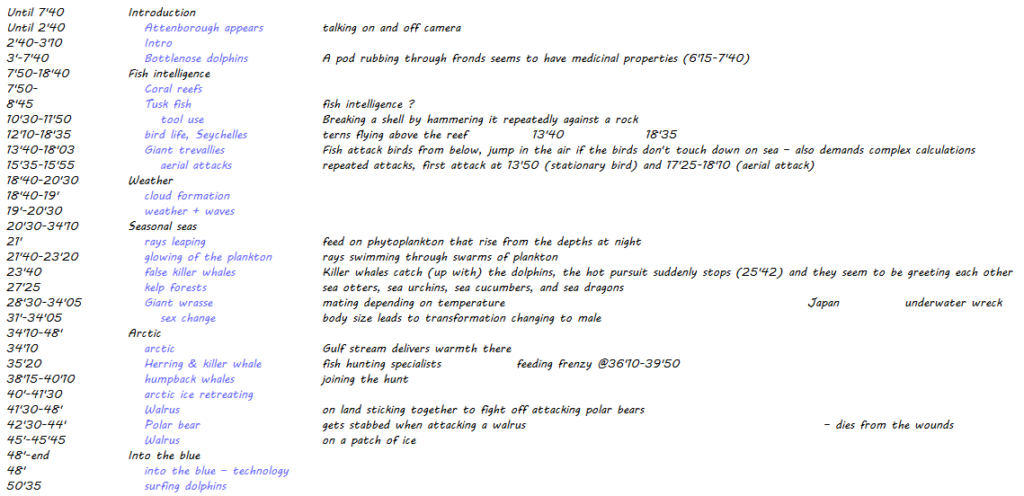
The same information in a different presentation
Below – and throughout the series – is an experimental view of the above. Since the blue colour is reserved for web links it is out of the question and was replaced with green which is used for three different purposes in the listing: for Theme, contents column it is used to mark the contents (usually a short for the detailed description in the right column). When appropriate it can also be used in the right column as a connecting text between two different – otherwise seemingly inconsistent – stories. Lastly it can be used to indicate filming location.| Start time | Theme, Contents | More detailed description (Filming location) |
|---|---|---|
| Until 7’40 | Introduction | |
| Until 2’40 | Attenborough appears | Talking on and off camera: about the series being about new science and technologies as well as talking about conservation |
| 2’40 | Introductory sequence | Routine sequence |
| 3′-7’40 | Bottlenose dolphins | A pod rubbing through fronds seems to have medicinal properties (6’15-7’40) |
| 7’50-18’40 | Fish intelligence | |
| 7’50 | Coral reefs | |
| 8’45 | Tusk fish | Fish intelligence |
| 10’30-11’50 | Tool use | Breaking a shell by hammering it repeatedly against a rock |
| 12’10-18’35 | Bird life | Terns flying above the reef (Seychelles) |
| 13’40-18′ | Giant trevallies | Fish attack birds from below, jump in the air if the birds don’t touch down on sea – also demands complex calculations |
| 15’35-16′ | Aerial attacks | Repeated attacks, first attack at 13’50 (stationary bird) and 17’25-18’10 (aerial attack) |
| 18’40-20’30 | Weather | |
| 18’40 | Cloud formation | The oceans hold 97% of all the water in the world |
| 19′ | Weather and waves | That water evaporates as the sun warms the surface, then it cools into clouds that generate storms that are deflected by the spinning earth |
| 20’30-34’10 | Seasonal seas | |
| 21′ | Rays leaping | Feed on zooplankton that rise from the depths at night |
| 21’40-23’20 | Glowing of the plankton | Rays swimming through swarms of plankton rising to the surface to feed (on phytoplankton) and luminesce due to the waves of the water |
| 23′ | Richness | “The richness of these waters is based on microscopic plants – phytoplankton – which bloom on such a massive scale they benefit us all. They, together with seaweeds and sea grasses, produce as much oxygen as all the forests and grassy plains on land.” – – Attenborough’s own words |
| 23’40 | False killer whales | Killer whales catch (up with) the dolphins, the hot pursuit suddenly stops (25’42) and they seem to be greeting each other |
| 27’25 | Kelp forests | Sea otters, sea urchins, sea cucumbers, and sea dragons |
| 28’30-34’05 | Giant wrasse | Mating depending on temperature |
| 31′-34’05 | Sex change | Body size leads to transformation changing to male |
| 34’10-48′ | Arctic | |
| 34’10 | Arctic | Gulf stream delivers warmth |
| 35’20 | Herring & killer whale | Fish hunting specialists – feeding frenzy (36’10-39’50) |
| 38’15-40′ | Humpbacks | Join the hunt |
| 40′ | Arctic ice retreating | |
| 41’30-48′ | Walrus | Sticking together on land to fight off attacking polar bears |
| 42’30-44′ | Polar bear | Gets stabbed when attacking a walrus |
| 45′-45’45 | Walrus | On patch of ice |
| 48′-end | Into the blue | |
| 48′ | Into the blue | Technology |
| 50’35 | Into the blue | Surfing with dolphins |
Selected material
A giant trevally preying on fledgling terns
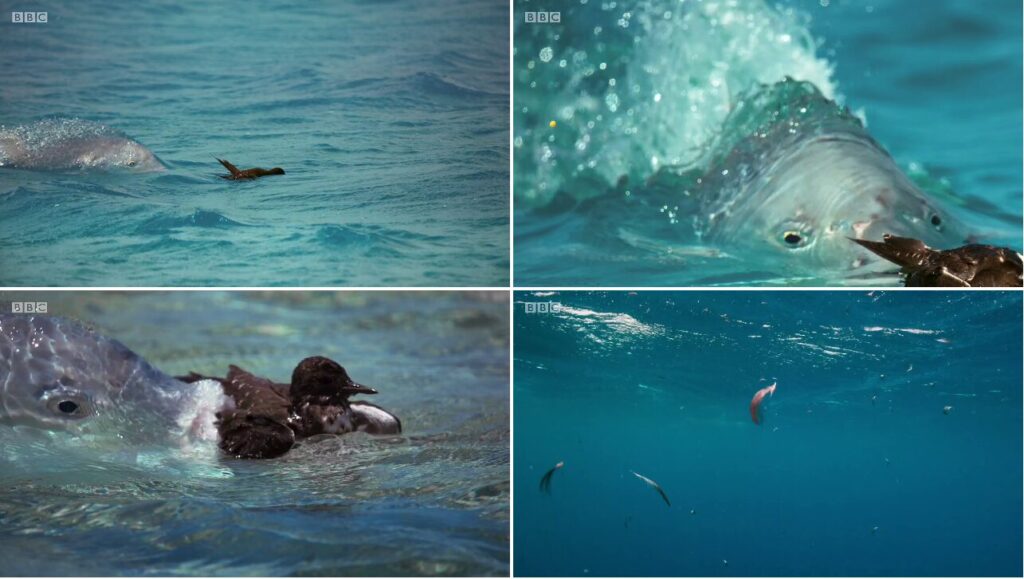
The water surface obviously is a dangerous place so if possible the fledglings do their best to avoid it, even drink on air

To catch one now the fish really have to up their game (literally).
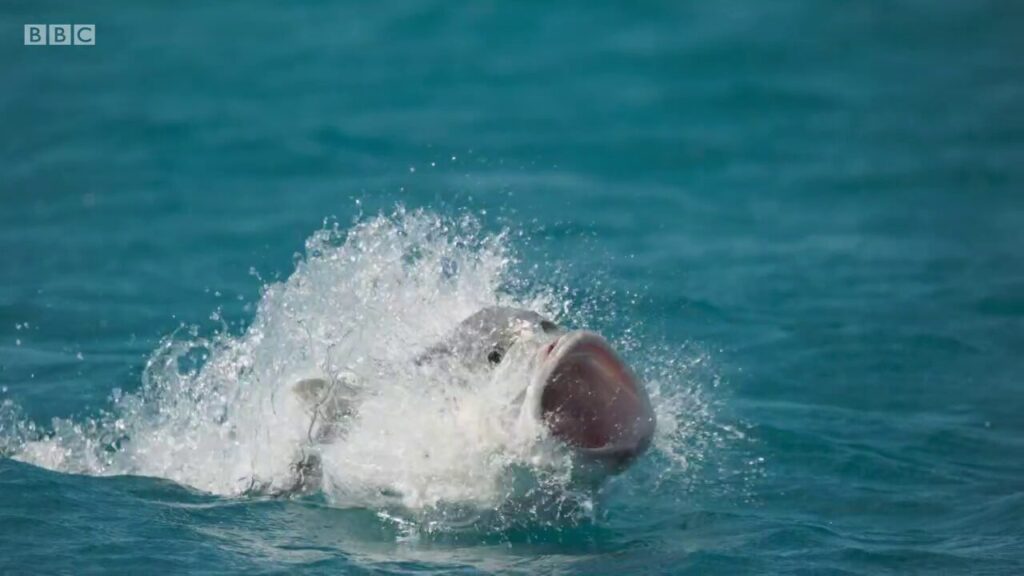
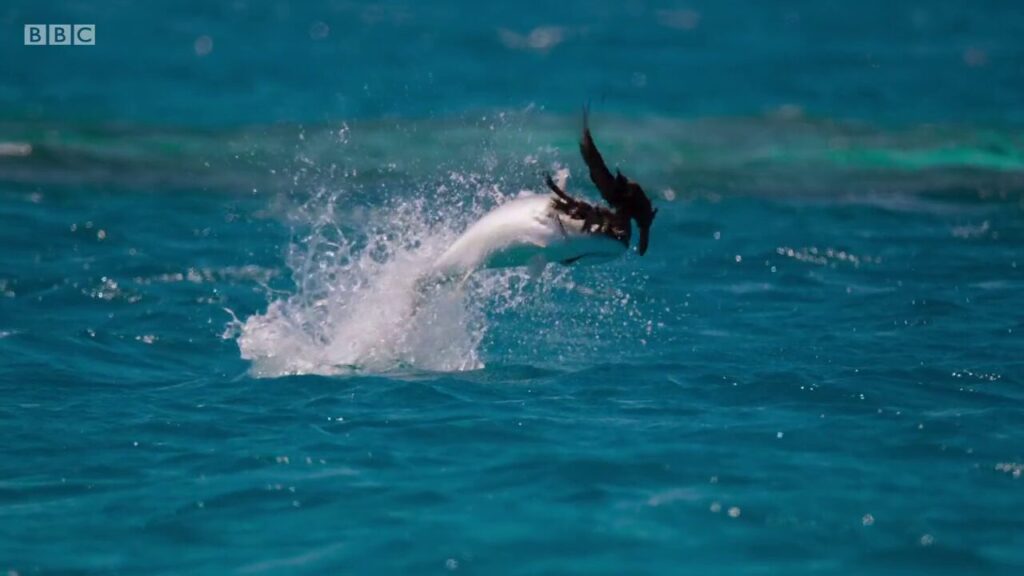
This demands the fish being able to calculate for instance air speed and altitude of the bird !
Mobula rays jumping

Their main food emerges at nights, plankton emerging from the deep waters
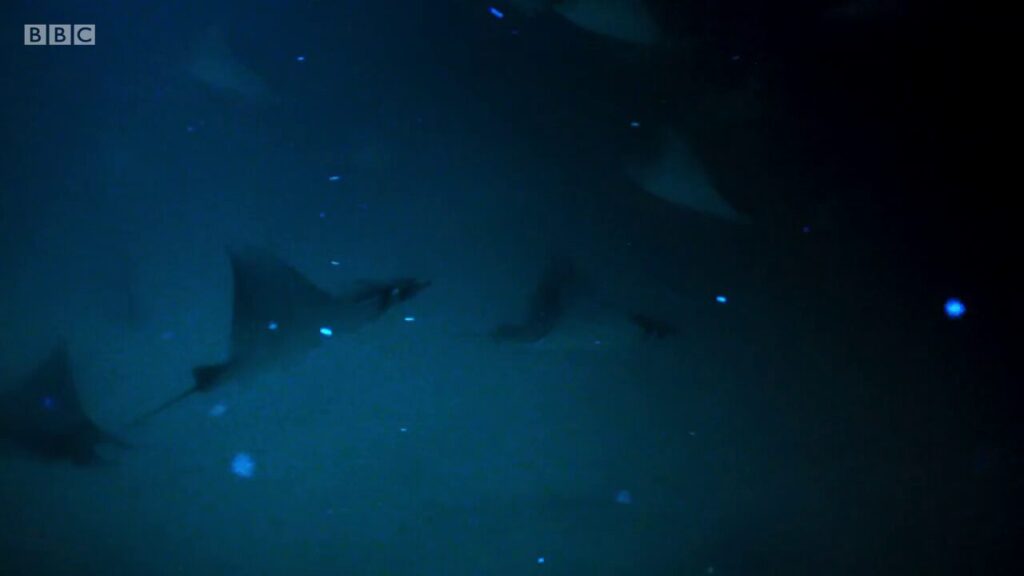
The technology to film the luminescence of the plankton was relatively recent during the filming of the series
Fish intelligence ?
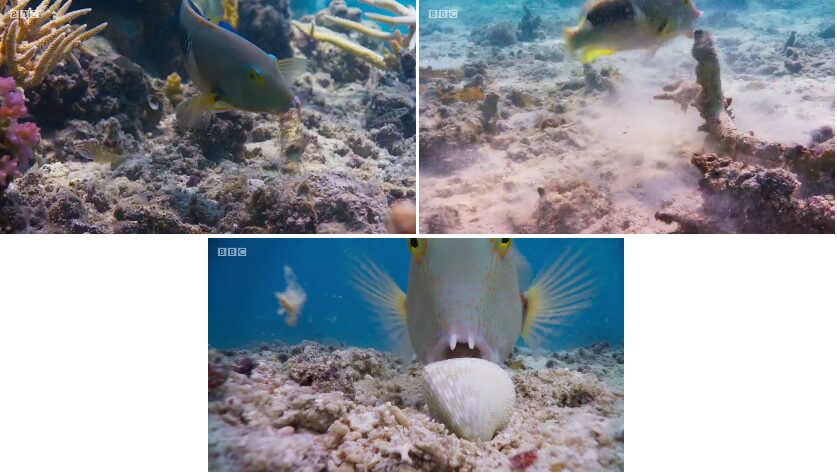
The tusk fish seems to know where to find the clams he wants. He goes to the edge of the reef and starts digging. He removes the rubbish piece by piece (top) until he finds what he wants (bottom).
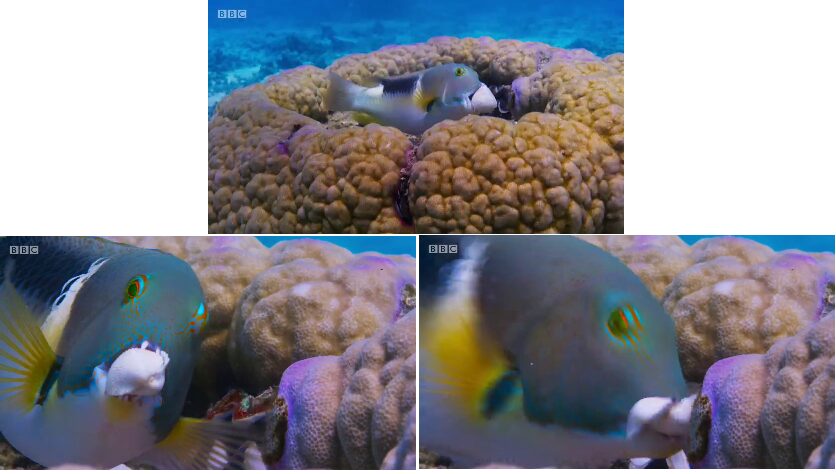
Having found the clam he takes it back to his “kitchen” where he smashes it against the rocks; tool use (11’06-11’33).